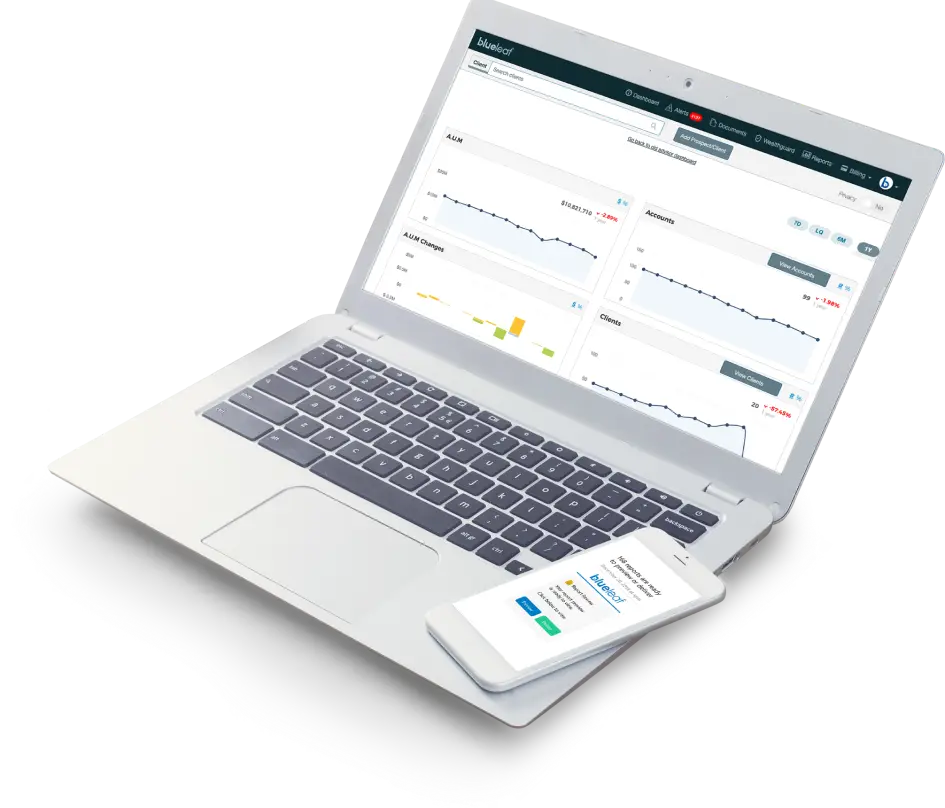Last Updated on April 6, 2023 by John Prendergast
“My clients aren’t online”
Many advisors still say “My clients aren’t online” as if it is a fact. If you find yourself saying this, know that while that may have been true, now, not so much. Regardless of how confident you feel or how much you think you know your clients, this statement has not been widely true for some time. But even if your clients were in fact unique, the last few years have changed everything
Even 5 years ago, it was likely your clients were online
Answer two simple questions:
1) What percent of your client base did NOT graduate from college?
2) What percent of your client base has a HH income of LESS than $50,000 per year?
Scribble down these two percentages on a scrap piece of paper. They’ll mean more to you in about 60 seconds.
Education and Income Drive Online Use
A few months ago, Pew Research* conducted a survey to measure internet usage by various demographic segments. They surveyed 2,200+ adults, 27% of which were 65+ years of age. Internet use was studied between differences in gender, age, race, education, and annual HH income. The research found that the statistically significant measures were (a) education level and (b) annual HH income. So, based on research, do your clients use the Internet?
Was your answer to #1 above a small percentage? The study found that 98% of adults who graduated college use the Internet.
Was your answer to #2 also a small percentage? The study also found that 90% of adults with a HH income of $50,000 – $74,999 use the internet, and that percentage jumps to 98% for adults with $75,000+ in annual HH income.
Grandma and Grandpa went online during the pandemic
During the pandemic, we all turned to social media to stay in touch with family and friends. Facebook and Instagram became a way to follow the grandkids and stay connected. Zoom and Facetime became familiar to grandparents as they participated in virtual birthday parties and holidays. These tools also became a way those clients interacted with you.
What may be less clear is that clients liked the change to virtual. According to a Kansas State Survey, 57% of clients now prefer some or all meetings with their advisor to be virtual. An even more astonishing change is that according to Fiserve research, 72% of those 70 and over now use online banking. And they log in more than 7x per month. That is double what it was in 2018. Not only that but they are also the happiest segment of online banking users.

“Data doesn’t lie”
If you’re about to dismiss these statistics as ‘not applicable to your client base’ for whatever reason you think is legitimate, read on.
“Data doesn’t lie” This is one of my favorite pieces of advice from a business mentor. Okay it’s not advice, per se, nor is it the most eloquent sentence ever formed, but it sticks. It came about when the results of an online campaign yielded very unexpected results. Our customers behaved in the exact opposite way I assumed they would.
I was struggling to believe the numbers in front of me, when my mentor simply said, “Data doesn’t lie, yo.” It was a ‘Haha’ statement followed by an ‘ah ha’ moment. I began to realize that my assumption (despite how confident I felt) was simply that – an assumption. I understood that I’d be foolish to base any business decision on a hunch. I need data. So, I swallowed my pride, embraced the numbers, and then leveraged the information to improve the business. “Data doesn’t lie, yo.”
So, the research above isn’t lying to you. It’s a chance to recognize that the world has changed and adjust to it. However, if you still need convincing, here are ways to collect your own data.

Test Your Assumption:
1) Survey your clients.
Write a survey to collect relevant information about how your clients. The key here is to ask for facts, not opinions. For example, instead of prompting them to rate how tech savvy they are, ask them to list types of devices they have at work and at home, total number of emails they receive each day, or what their three favorite websites are. Offer a “not applicable” option in case, but you may be surprised by their answers.
2) Conduct an experiment.
Run a test without directly asking clients anything. Sign up for a technology that intrigues you. Actually use the tool with a portion of your clients and wait to see how they react. Do they rave about this new addition to your service? Does your relationship with the client remain the same, but your business efficiency drastically improves?
*Source: Pew Research, Dec. 2012, “Who’s Online?”
*Source: Financial Advisor IQ Virtual meetings between clients, FAs here to stay: Report
*Source: Fiserv Expectations & Experiences: Consumer Payments – Online Banking’s Most Satisfied Segment? Turns Out It’s Seniors

